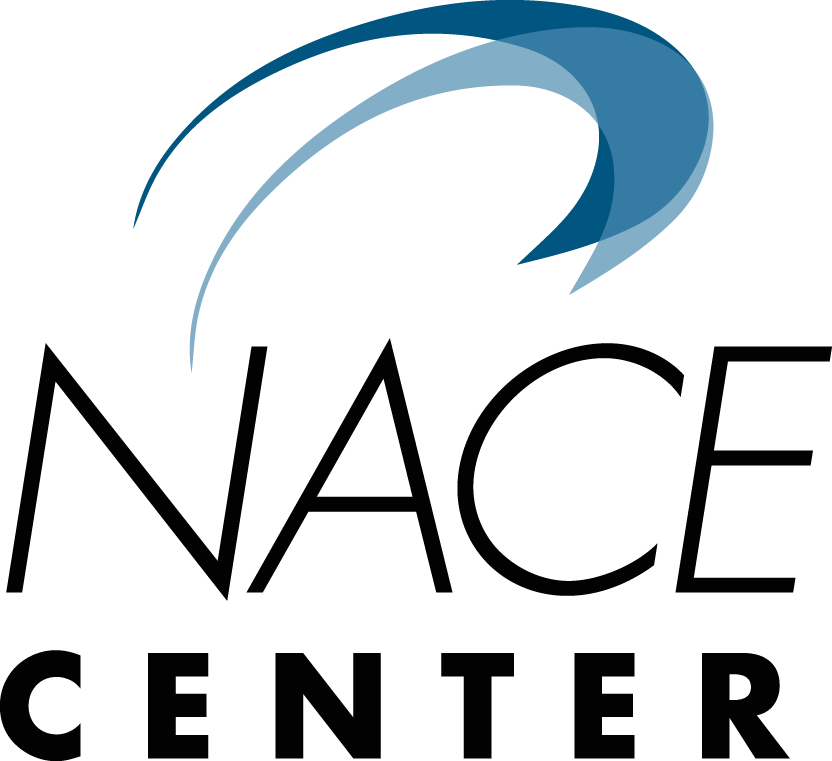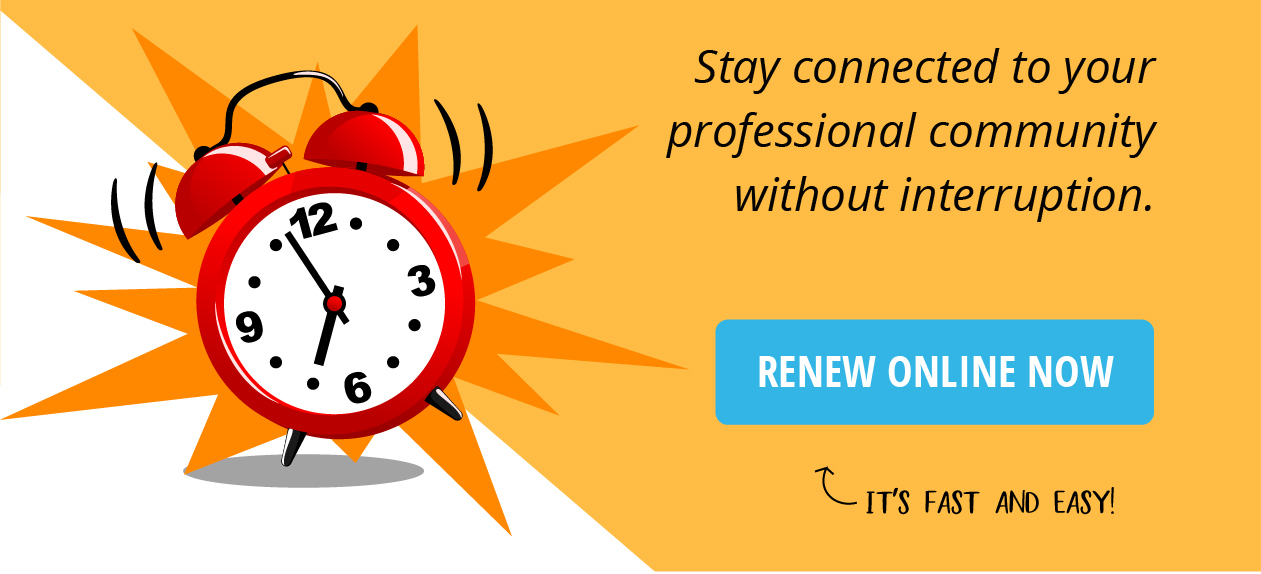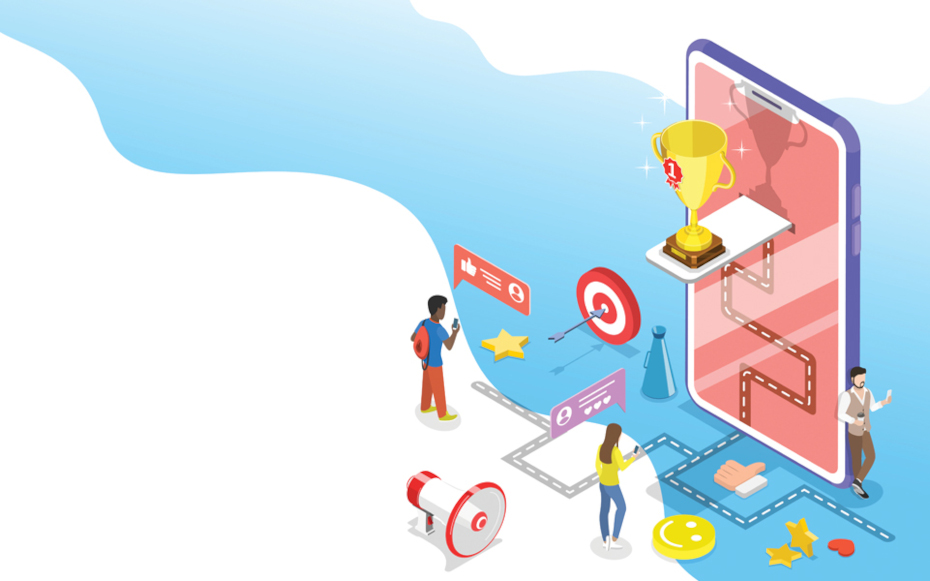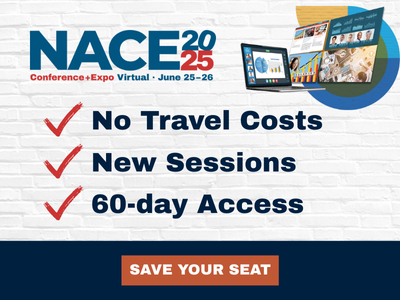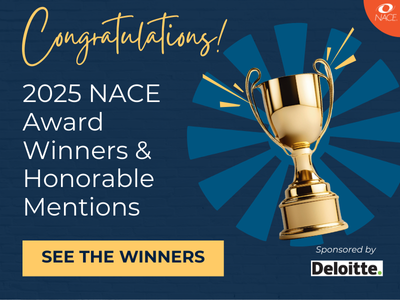NACE Journal, February 2020
With no additional budget, Clarion’s Center for Career and Professional Development built and implemented a mentor program for students.
Clarion University, located in rural west-central Pennsylvania, serves nearly 5,000 diverse learners, of whom nearly 40 percent are first-generation college students. The university’s Center for Career and Professional Development (CCPD) operates under a decentralized model. In 2015, administration supported the hiring of an additional staff member—the author—to create a new mentorship program. Currently, the office consists of four career coaches, who are led by a director and supported by an administrative assistant.
During my first week on the job, the director and I discussed the future of our office, historical perspectives to guide my research and the development of Clarion University’s first professionally focused mentorship program for students, and, most importantly, the budget we had been allocated to support this initiative. I walked out of his office more motivated than ever despite challenging circumstances. Not only were we allocated no additional monies to support the initiative, but I was hired as a full-time, two-year temporary position. Already feeling like I had something to prove, I got to work.
Over the last three years, more than 400 students and mentors have participated in the CUmentor program, which has served as a model and benchmark for other institutions and organizations.
What follows is an outline of how Clarion University developed a mentorship program that continues to increase student engagement, bolster faculty support toward career services, and leverage its alumni network. The program was developed and launched within four months—with no additional budget.
Research and Findings
I began my research by contacting approximately 15 peer and aspirant colleges and universities nationwide with a formalized mentorship program. Programs I reviewed varied from informal (flash mentoring) to formalized mentoring partnerships. Participants and partnerships ranged from student-to-student, -faculty, -alumni, or -employers. Each university had a single coordinator in charge of administering the program. Many programs benefited from joint ventures with their respective alumni relations office. Some programs partnered with their alumni relations team to recruit alumni to serve as mentors, while other career offices benefited by being located within the university’s alumni office.
What came as no surprise was the importance of mentorship software. Although each aspirant college and university had a different process and software, or no software at all, the success or failure of their program rested in large part on mentorship software. Those programs that used software seemed to be more efficient and offered robust analytics. This provided coordinators additional time to market to students, alumni, and faculty; develop supporting material; and worry less about how to accurately match participants. Although I contacted vendors to request demos to review software and better understand their processes, procedures, and methodology, my biggest problem was unsolved: How could I get software without financial support?
I did not find the average percentage of eligible students who participated in mentorship programs—the student utilization rate—through my research, but was able to calculate this by comparing the average number of students who participated with the average number of eligible students for the program at each of the respective institutions I interviewed. I concluded that most formalized mentorship programs have a student utilization rate of 10 to 15 percent.
Arguably the most important finding of my research was that none of the programs I interviewed were formally and intentionally preparing their students to be mentored. Although programs provided structure and support for partnerships, many were not thoughtfully matching students with mentors. For example, freshmen were matched with senior-level managers at high-profile firms; more times than not, such a partnership failed, and ties were severed with the alumnus. It is important to understand and carefully consider the entire program life cycle: Universities work hard recruiting alumni to serve as mentors and equally hard to garner student participation. The last thing anyone wants is to ruin both relationships.
Other key takeaways from my research were:
- Prepare students to be mentored;
- Thoughtfully structure the program with measurable objectives;
- Find a software that meets your needs;
- Recruit and engage participants; and
- Assess learning objectives and program impact.
To learn more
about the CUmentor program and to view resources, visit www.clarion.edu/cumentorPreparing Students to Be Mentored
To develop a successful mentoring program, CCPD staff knew that we first had to increase student engagement with our programs and services. Lack and quality of content were not the issue, but we continued to struggle to attract large numbers of students to engage with our office and its offerings. To identify how to make our programs and services more attractive and motivate students to use them, we held focus groups with students, attended conferences in search of best practices, and reviewed the literature.
Perhaps the most humbling feedback we received from our focus groups was “don’t be lame.” Translation: Students perceived our services as mundane. It also became evident that students thought of career services as an activity they would complete “when they needed it,” which, at our institution, was historically toward the end of their junior or senior year. We not only had to motivate and attract more students, but we also needed to create a culture shift that focused on engaging students early, often, and throughout their entire college career.
A concurrent session at an Eastern Association of Colleges and Employers (EACE) conference provided the answer to the first part of our challenge: The speaker discussed how gamification was being adopted to make content more attractive and increase user engagement. To address the second part of our challenge—shifting the culture to one that is focused on career development—the CCPD created a four-year career and professional development plan.
The four-year plan is an adaptive tool designed to engage Clarion students with high-impact programs and services throughout their college career. This was accomplished by partnering with faculty and administration to embed the plan within the curriculum. The four-year plan is a framework for students, professional staff, and administration to understand when, where, and how career services will engage students, delivering timely services to aid in their career development. CCPD liaisons leverage this framework as a tool to discuss integration within their respective academic departments.
For example, the College of Business Administration and Information Sciences offers core classes for its students, regardless of major or concentration, to be completed throughout their four or more years at Clarion. It is within each of these courses that the four-year plan is embedded. During their freshman year, students work with the office to develop an individualized four-year plan, explore majors and/or occupations, receive an overview of services, and, as part of a class assignment, create or update a resume. During their sophomore year, students are encouraged to participate in CUprofessional, which includes programs designed to enhance their understanding of career development and job-search skills. During their junior year, students work in collaboration with faculty and the CCPD to gain experiential opportunities and take part in career-related events; they are also encouraged to participate in the CUmentor program. During their senior year, students are invited to attend career-related events, participate in mock interviews, and finalize their career documents for a successful transition from college to career. The four-year plan is also customizable and available to graduate students.
The plan has streamlined and clearly connected programs and services into a meaningful pathway that engages students, staff, and faculty in students’ professional development. Since the introduction of the plan in 2015-16, overall student engagement with the CCPD has increased by more than 200 percent. More specifically, student engagement in business and information science-related majors has increased by 750 percent—from 73 students to more than 620 in three years. Engagement by communication majors increased 1,500 percent (from three to 50 students) and by nearly 9,000 percent among psychology students (from just one to 89 students). In addition, within the College of Business Administration and Information Sciences, the four-year plan has increased faculty collaboration by 75 percent, resulting in more than 50 programs and presentations per year. Most importantly, the four-year plan has allowed the CCPD to begin a career readiness culture shift that was desperately needed at the university.
CUprofessional
The major component of preparing our students to be mentored is CUprofessional (CUpro), which is typically introduced in the sophomore year. Students have the flexibility to choose from various professional development options that work with their schedule. Learning options include individual appointments, an online professional development series, or two annual in-person events: “Speed Sessions for Career Success,” held in the fall, and “Professional Development Day,” held in the spring.
Regardless of how students choose to engage with CUpro, the program topics remain the same and are categorized into five areas. The first, “Choose Your Path,” includes topics of career research, career exploration, job shadowing/field experience, and financial responsibility. The second is “Job Search Documents,” which includes resume, cover letter, references, job applications, and career portfolios. The third category is “Enhance Your Interview Skills,” with topics that include effective interview strategies, practice interviewing, or related professional panel interview discussions. The fourth category, “Professionalism in the Workplace,” includes LinkedIn, networking, dining etiquette, attire, elevator pitch, meeting management, and customer service. The fifth and final category is “College to Career”; topics include job or internship strategies, graduate/professional school, how to work a job fair, attending a job/career/grad fair, and financial responsibility.
The objective for students is to complete at least one program topic within each of the five areas. Successful completion of all five areas results in a CUpro digital badge and grants students eligibility into our CUmentor program. This requirement has ensured that our students are professionally prepared and responsible to engage with our mentors. (See the CUpro handout.)
CUprofessional was the culmination of repackaging our programs and services using gamification techniques. Digital badging has evolved our programs from what was once considered mundane, into attractive, competitive, and skill-infused activities. In fact, during the development of CUpro, the office reengineered all program topics with NACE’s career readiness competencies. When a student is awarded a digital badge, the student is provided a description that outlines the competencies learned and criteria to earn the badge. For example, the CUpro platinum badge description reads: “The recipient of this highest achieving badge is recognized for continuous professional development toward their career readiness to include oral/written communication, professionalism/work ethic, and career management. In order to earn a platinum badge, the student accumulated approximately 20 professional development hours through Clarion University’s Center for Career and Professional Development certified professional development activities.”
We had found the description is an important element for students to understand their journey and helps them articulate to an employer the skills gained through involvement.
Since the official introduction of CUpro and gamification in 2016, more than 750 badges have been issued and shared more than 7,500 times on LinkedIn and social media. Sixty percent of students who completed CUpro indicated that the digital badge was a larger motivating factor when considering whether or not to participate in the program or event than the skills they may gain. Digital badging has allowed our office to attract larger volumes of students and introduce the career readiness competencies desired by employers. More than 90 percent of badge recipients reported positive career outcome rates in our most recent first-destination survey—a testament to the power of innovative programs infused with gamification!
CUmentor
Once students successfully complete CUpro and earn a digital badge, they are eligible for the mentorship program: CUmentor. The CUmentor program is designed to link alumni, employers, and professional partners with Clarion students to facilitate mentorship that fosters the sharing of knowledge and experience. Our goal is to ensure that students’ preparedness, confidence, and knowledge related to professional field(s) of interests has increased at the completion of the program. The creation of CUprofessional provided a jump start for student development in these areas; however, we needed to continue their development through a high-impact, personalized experience. To do this right, it was important to provide students control in the decision-making process.
CUmentor provides students the flexibility of choosing how and when to participate by creating an experience that is right for them. They have the option of choosing informal mentoring, formal mentoring, or a combination of the two. Informal mentoring, also known as flash mentoring, offers students short, casual conversations with mentors for up to 30 days. Whether such conversations include a resume review, mock interview, job shadow, or graduate school advice, informal mentoring is designed for speed. Participants select areas of interest, and students are instantly provided a list of mentors from which to choose.
Formal mentoring, our most popular option, is a more in-depth, yearlong partnership. Participants complete an application, answering questions on academic, geographic, personal, and professional commonalities. Students also respond to three open-ended questions, which are provided to their mentor to educate and ease the matching process. Mentors, who are alumni and employers, fill out a similar application that outlines their experiences, strengths, and areas of interest. This allows the coordinator to more accurately match participants. As part of the process, participants are required to agree to the program’s terms and conditions.
Prior to a match being made, students and mentors are provided individualized handbooks for review; these cover learning objectives, define roles and expectations, provide guidance on preparing for the first meeting, and offer recommended resources and related information. Student applicants are required to meet with their liaison to reaffirm the roles and expectations of the student before a match is completed. This step, added to our program in 2017-18, has increased student understanding and reduced their anxiety around how to reach out to a mentor for the first time. Mentors, too, have noted that the first few meetings are now more structured and goal oriented.
Key Outcomes
Clarion University’s Center for Career and Professional Development successfully developed its CUmentor program by leveraging its strengths and resources to:- Re-engineer all programs and services with NACE’s career readiness competencies;
- Create a four-year career and professional development plan, integrated within the curriculum, unique to each school or college, which has increased student engagement by 200 percent and faculty collaboration by 75 percent;
- Repackage services by introducing gamification techniques, with digital badging, which has increased program participation by 60 percent;
- Collaborate across departments with faculty and students to create a homegrown mentoring software that has saved the university tens of thousands of dollars and reduced time to match by 800 percent; and
- Assist and prepare students who have participated in the program for successful first-destination outcomes, with 90 percent reporting a positive outcome by the day of graduation.
Development and Success Through Campus Collaboration
During the piloting of CUmentor, matching was a manual process. Our applications were questionnaires that were downloaded into an Excel file, cross-referenced, and analyzed. Although accurate, the process was arduous and time consuming: In fact, our first four matches took three hours to complete, quickly reinforcing the need for software. Unfortunately, there was no budget available.
The answer to our dilemma came in an email from the chair of our computer information science department. The message outlined the department’s capstone course, in which students are required to work with a campus or local community organization to develop a software program to meet the client’s needs. Eureka!
Over the past three years (2015-16 through 2018-19), the CCPD has collaborated with the computer information science department and its students to digitize a home-grown mentoring algorithm and develop a software to support the CUmentor program. Each fall semester, the CCPD leads interdepartmental collaboration with three to five CIS students to further develop and enhance the mentoring software, resulting in approximately $10,000 worth of cost savings and a significant reduction—800 percent—in matching time, allowing the coordinator to make a match in less than five minutes.
This and other strategic partnerships have strengthened and made CUmentor successful. Whether it was the development of software; production of a marketing video by an intern; or collaboration with our marketing department to create flyers, posters, and infographics, the success of CUmentor is because it is a universitywide effort. This is also true for recruiting participants in the program.
Scaling, Recruiting, and Assessing
Currently, the CUmentor program is available to all students but integrated primarily within communication, psychology, and business-related majors. As our research found that many efforts failed because they lacked a balance between the number of students and mentors, we have strategically selected departments that have successfully integrated the four-year plan. In addition, we track student progression trends by majors. If we see an uptick in a certain major, then we begin the recruitment cycle of mentors. This approach has yielded excellent results for the program: Our student utilization rate is 40 percent.
Recruiting mentors is a collaborative effort with our alumni relations office. At least once a semester, our offices meet to provide an update on progress, changes, and ways alumni can engage with CCPD, one of which is CUmentor. In engaging with alumni, the alumni relations team gauges how the alumnus would like to get involved at Clarion. Contact information for those interested in mentoring is forwarded to the relevant liaison for a follow-up call/meeting. During this meeting, we are interviewing, assessing fit, and educating the individual on the CUmentor program. This partnership, along with word of mouth, has successfully kept the scales balanced for our mentorship program.
Assessment of our program is a critical step in validating learning objectives and understanding the impact of the program on students’ first-destination outcomes. Two formal assessments are distributed each year—a mid-year and end-of-year assessment. The mid-year assessment, sent in December, serves as a brief check-in to see how partnerships are progressing. Occasionally, partnerships may need to be terminated and participants re-matched with a more suitable partner. The end-of-year assessment, sent in May, formally ends the program for the year and gathers data to track learning outcomes. However, students and mentors have the option to continue their partnership if they wish.
Furthermore, first-destination outcome rates, following NACE standards and procedures, are calculated for students who complete the CUmentor program. Over the last three years, more than 90 percent of students who participated in the CUmentor program held a positive career outcome by the day of graduation. Moreover, at six months post-graduation, 100 percent of participants noted a positive career outcome.
Lessons Learned
The success of the CUmentor program has not come without trial and error. If you are considering a mentorship program or are trying to strengthen an existing program, here are some suggestions:
- Develop learning and program objectives first. This is critical to gaining buy-in and knowing how to assess the program.
- Research, research, and do more research. I have benefited tremendously from reviewing best practices, participating in demos for mentorship software platforms, and attending conferences. There is always a better way, and learning from others will help strengthen your program.
- Faculty partnerships create a culture shift. Faculty support is the most critical element for getting students to engage with our office. Learn to appreciate the student-to-faculty power dynamic and leverage it. Trust me, our numbers prove that it is worth it.
- Repackage your products with the consumer in mind. We’ve learned that edutaining (yes, education and entertaining) our students is important. Knowing your audience and tailoring your communication to meet their needs makes a difference. One size doesn’t fit all; be adaptive to the generations at hand.
- Software matters. Think of the end user, intuitiveness, and the analytics you need when demoing and considering software.
- Scalability and burnout are real. Do it right the first time. Ensure you are noting the balance of your scale and start small. Implement, assess, adapt, and repeat.

